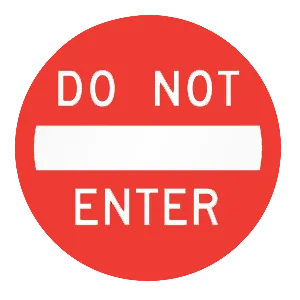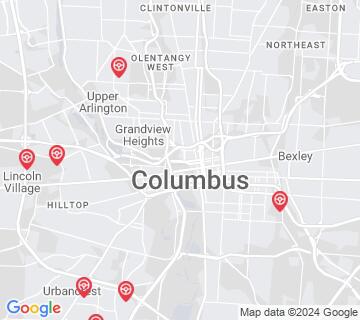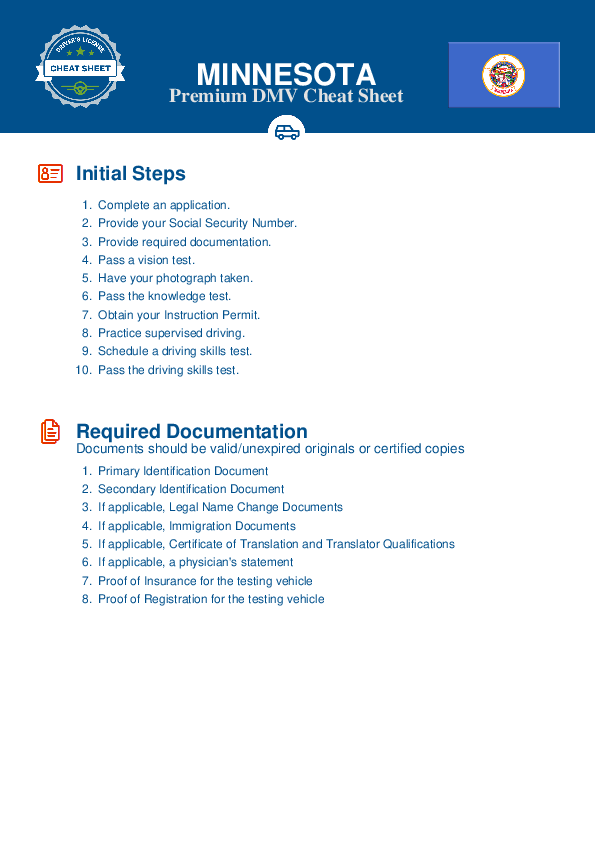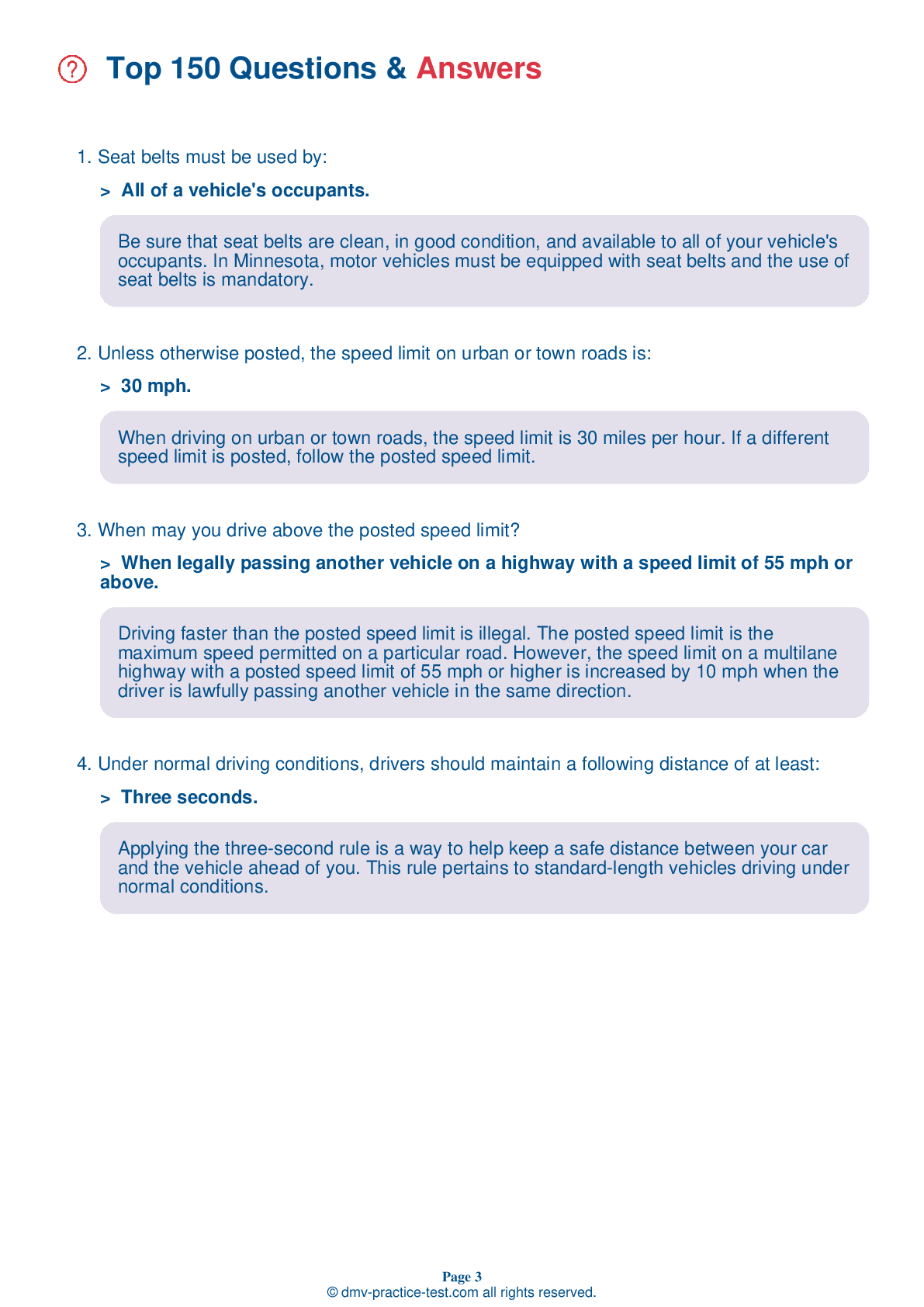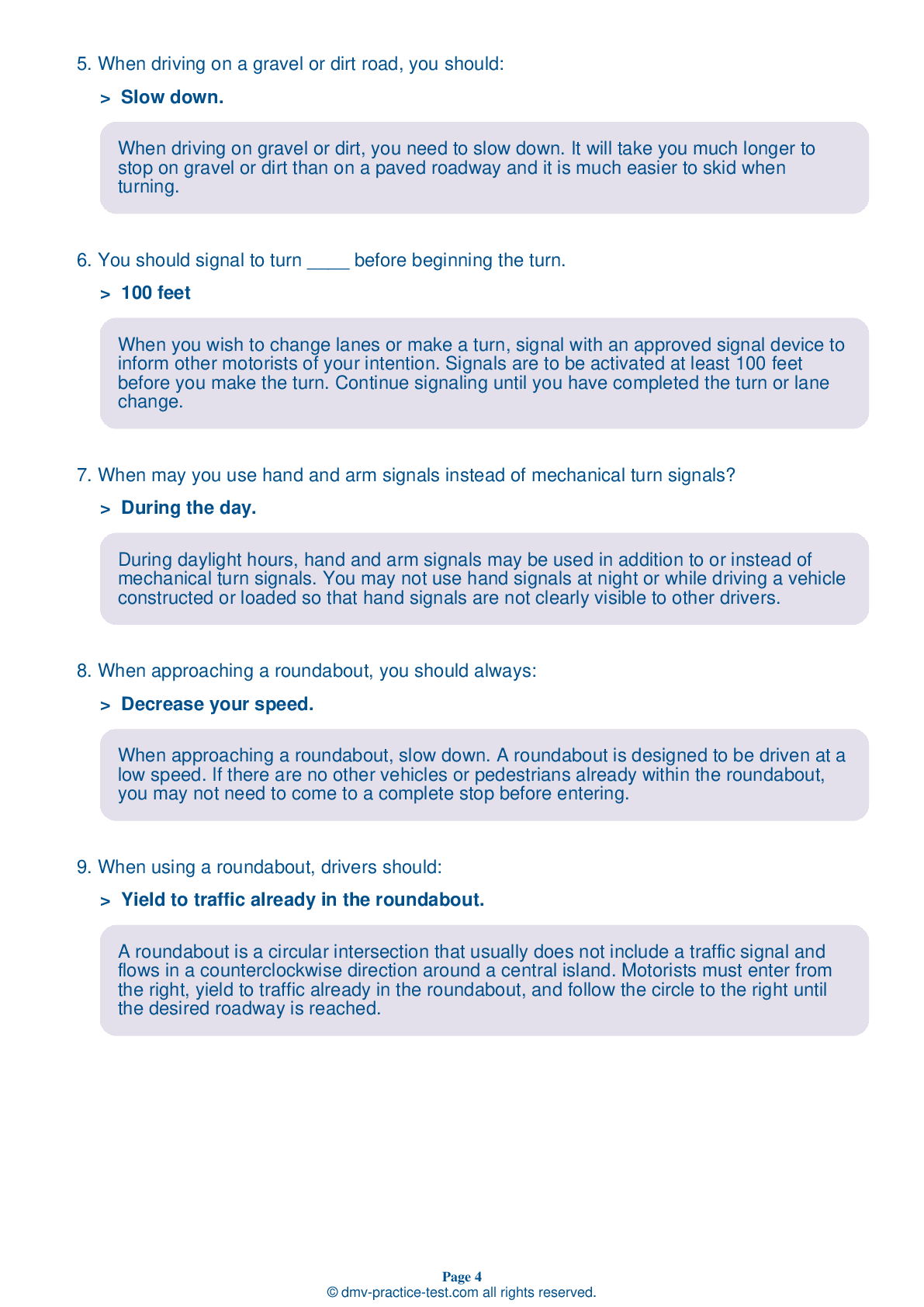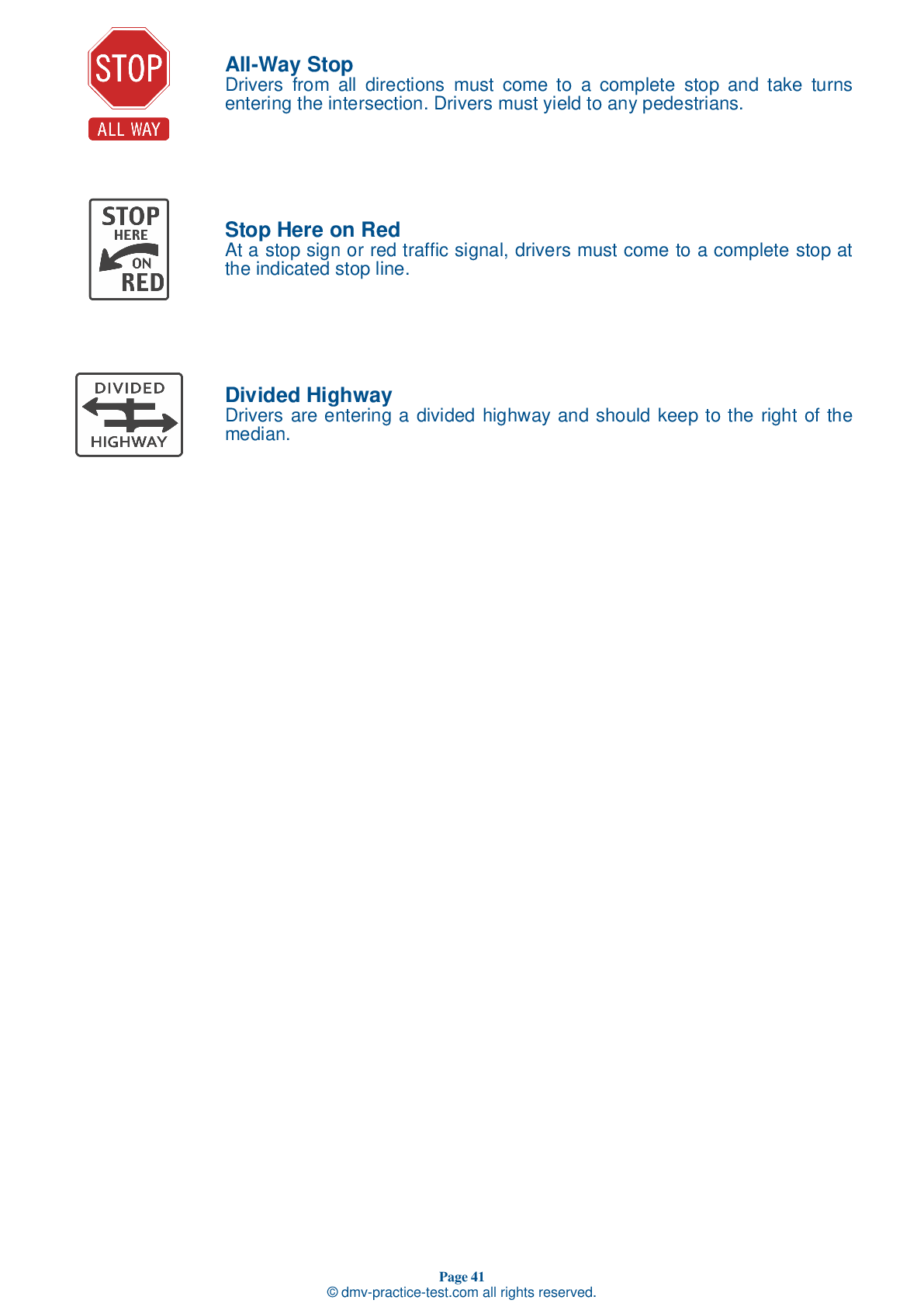FREE Minnesota DMV Practice Test #23
The Minnesota DMV practise examinations have been updated for January 2024. It includes questions based on the Minnesota Driver Handbook's most essential traffic signals and laws for 2024. Use actual questions that are very similar (often identical!) to the DMV driving permit test and driver's licence exam to study for the DMV driving permit test and driver's licence exam.
On the practise exam, each question gets a tip and explanation to help you remember the concepts. The written component of the official Minnesota DMV test will include questions about traffic rules, traffic signs, and driving statutes, as well as knowledge from the Driver Handbook.
To obtain a passing grade, you must correctly answer 32 of the 40 questions. To help you prepare for your instruction permit or driver's licence, take our Minnesota DMV practise test.
The DMV exam is available in several languages.
Using any kind of testing assistance will result in an automatic fail, and the DMV may take additional action against your driver's licence, so stay away from it.
1 . You are more likely to survive a car crash if you use lap and shoulder belts together.
The lap belt should be adjusted to fit snugly across your hipbones or upper thighs. The shoulder belt should be fitted snugly across the chest and middle of the shoulder. If the seat belt is positioned correctly, it is much less likely to contribute to injuries in the event of a crash.
2 . You may continue carefully through an intersection with a yellow light if:
If a steady yellow light appears when you are already within an intersection, you should continue through the intersection carefully.
3 . While driving, your wheels slip off the edge of the road. You should:
If your vehicle begins to leave the road, continue to drive with the wheels off the pavement and reduce your speed by gently applying the brakes. When at a safe speed, turn the steering wheel to return to the pavement. Do not attempt to force your vehicle back onto the pavement by sharply turning the steering wheel.
4 . You are borrowing an unfamiliar vehicle from a friend. You should:
When driving an unfamiliar vehicle, take a few minutes before driving to familiarize yourself with the location and operation of the turn signals, hazard warning signals, headlights and beam selector, windshield wipers and washers, brakes, gear selector, and horn. Any defects should be corrected before the vehicle is driven.
5 . This sign means:
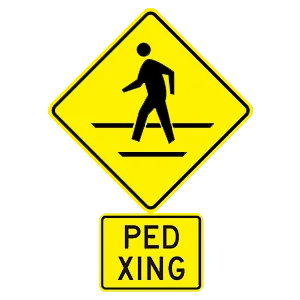
Warning signs are usually diamond-shaped with black markings on a yellow background. They alert drivers to upcoming hazards. This sign indicates that there may be pedestrians crossing the road ahead.
6 . This sign is used to prevent:
